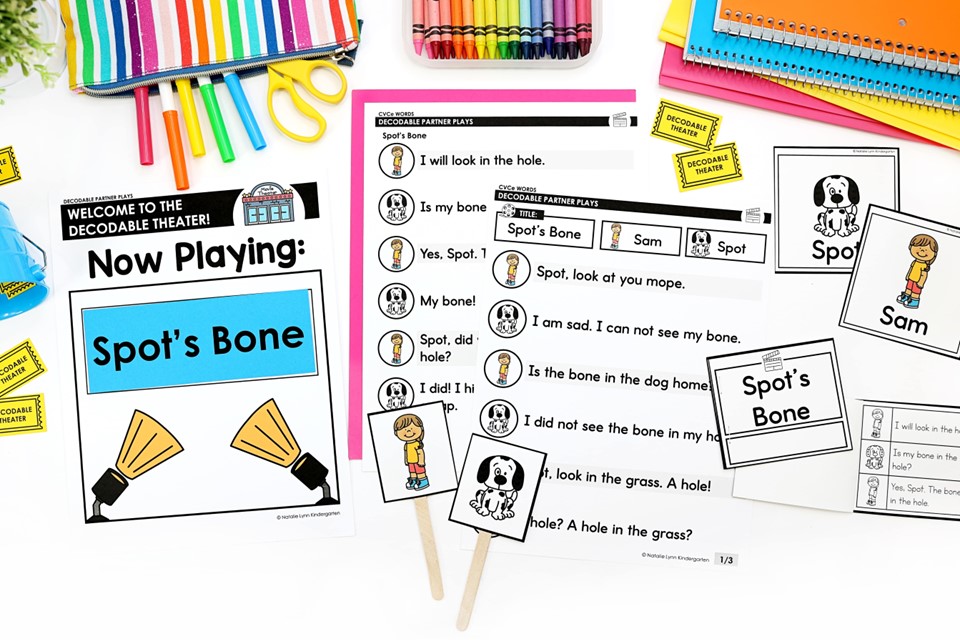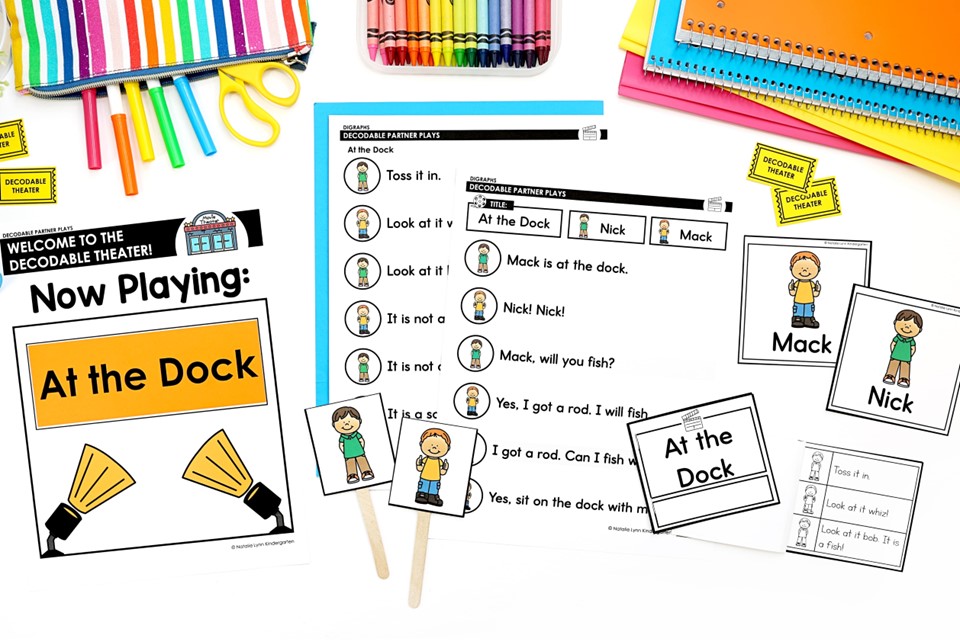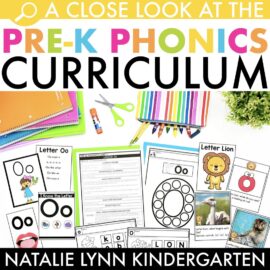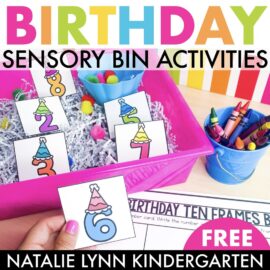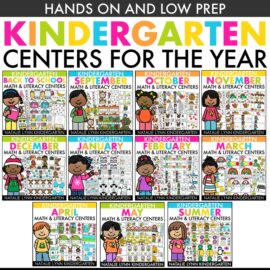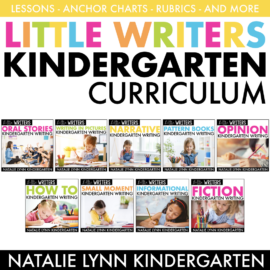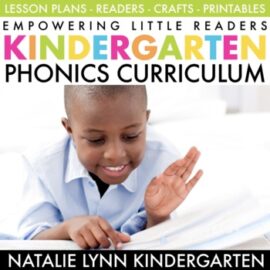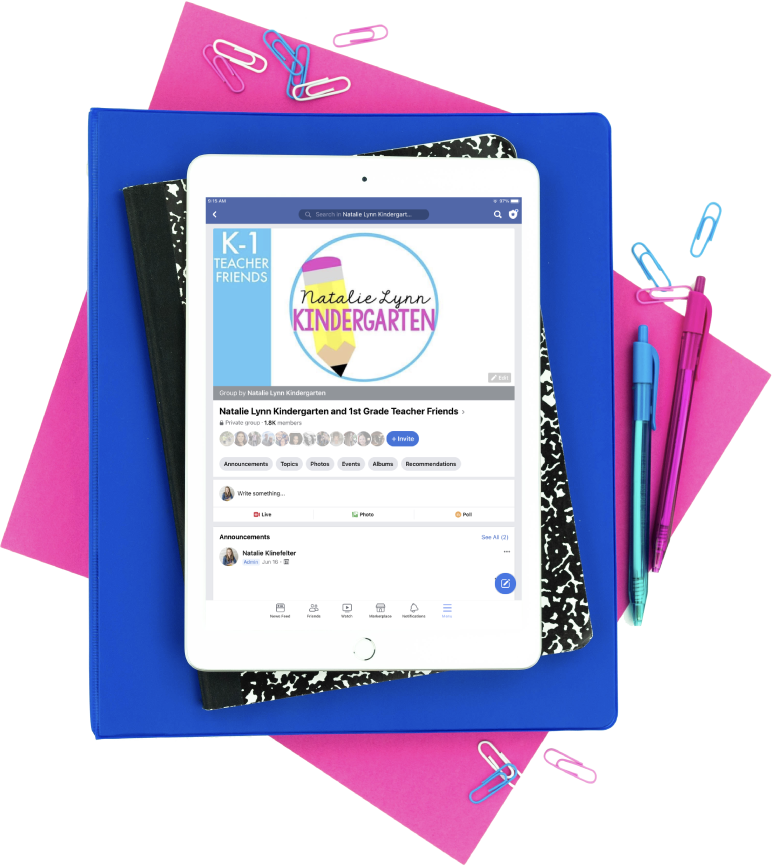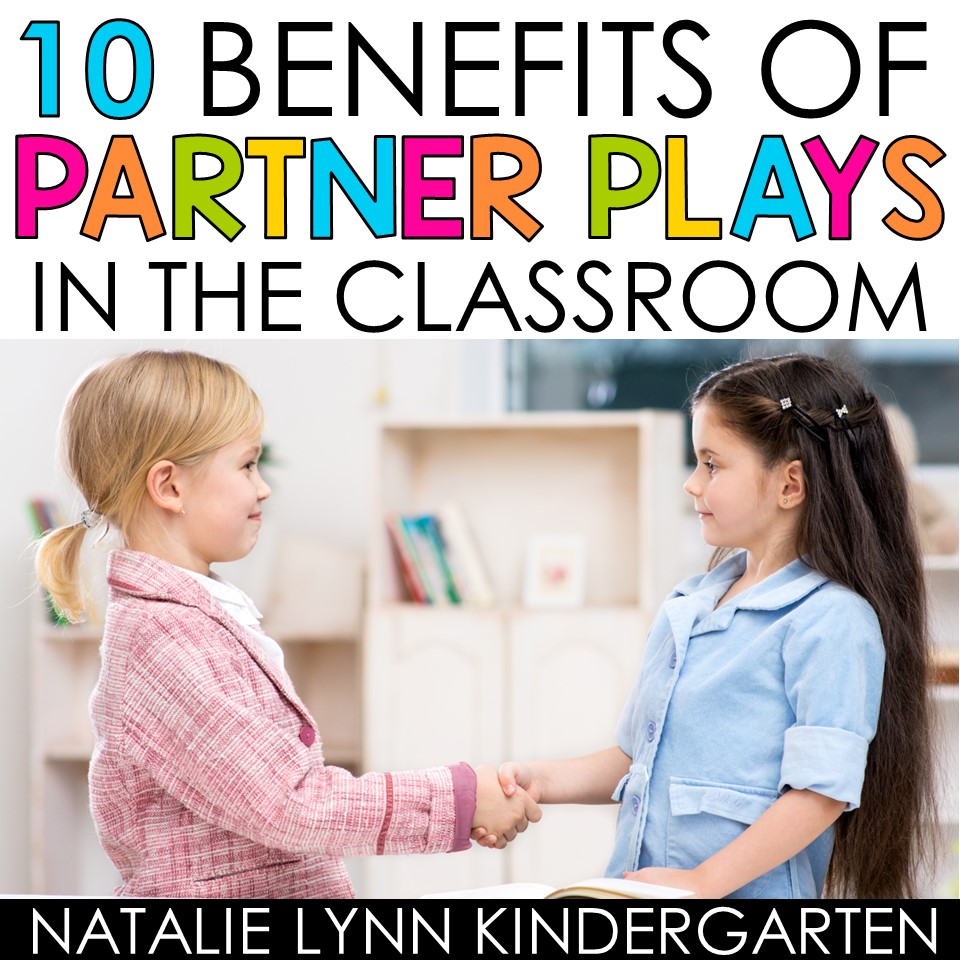
In this blog post: Learn about the benefits of using decodable partner plays in your classroom and find out how to use them effectively for reader’s theater in Kindergarten, 1st, or 2nd grade.
As a Kindergarten teacher, I know firsthand how important it is to find engaging and motivating ways for our students to practice their reading skills. Of course, that can be easier said than done!
Between looking for reading activities that are fun and interactive and text that our students are actually able to read… it can be a challenge.
Enter: decodable partner plays.
Decodable partner plays are the perfect way to get your students excited about reading, and today I’m going to outline what they are, how to use them, and the benefits you’ll see from implementing them in your classroom.
What are decodable partner plays?
Decodable partner plays, also sometimes referred to as decodable reader’s theater, are short and scripted dialogues written with students in mind.
What makes these plays unique? Unlike traditional reader’s theater, decodable partner plays are very controlled texts. The dialogue is written with limited sight words and words that only contain phonics patterns previously taught.
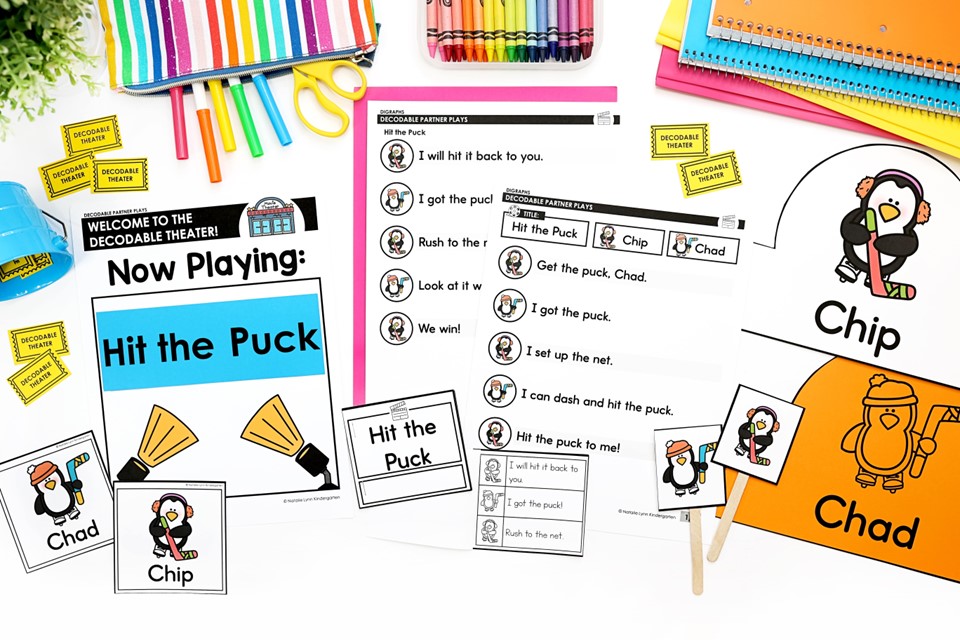
The plays build through a phonics scope and sequence, which means that they slowly get more difficult as students’ knowledge grows.
Because these texts are so controlled, they are the ideal tool to help beginning readers improve their phonics skills.
How do decodable partner plays work?
Students will grab a partner and each choose a role. The plays consist of back and forth dialogue that partners will take turns reading with each other.
Students can get as into these roles as you want! They can grab the character hats or nametags and act their heart out. They can grab the stick puppets and put on a show. Or, they can simply read the plays as a story.
So why should you consider implementing decodable partner plays in your classroom?
The benefits of decodable partner plays
If you’re thinking about implementing a decodable reader’s theater in your classroom (or you’re trying to convince admin), these are just a few of the benefits you might consider.
Benefit #1: They are low stress
Do you have students who shut down whenever a book is placed in front of them? You know that they’re capable, but sometimes the stress of feeling like they have to know how to read is too much for our little learners.
Decodable partner plays provide a low-pressure opportunity for students to practice reading – and they probably won’t even realize that they’re learning!
Benefit #2: They provide meaningful phonics practice
Because decodable partner plays are made up of decodable text, students are able to practice and develop phonics skills in a fun and engaging way.
By choosing plays that only contain phonics skills students are currently working on or have previously learned, you are supporting students in developing their fluency.
Benefit #3: They develop fluency through expression
Do. you. have. students. who. read. like. this? We call those reading robots. They can read every word, but it’s stilted and has no tone to it.
Reading with expression is an important part of reading fluency, but it can be one of the more difficult skills to practice and develop.
Because decodable partner plays are filled with dialogue and *acting*, they naturally lend themselves to practicing expression.
As students act out the story, they get excited to read their lines as their character would actually say it.

Benefit #4: They develop comprehension skills
One criticism I often see of decodable texts is that they aren’t “meaty” enough to work on comprehension skills.
While that is an discussion for another day, I would argue that partner plays are one of the best ways to develop comprehension skills.
Not only are students reading the story, but they have to understand it well enough to act it out. Now you’re connecting reading to whole body movement and critical thinking.
If you have students watching the partner play performance, you can also have them follow up with a simple retelling sheet for comprehension. Now everyone is involved and learning, not just the actors!
Benefit #5: They incorporate playful learning
Research shows that children are wired to learn through play. Playful learning is play that is directed towards a specific learning goal, and it has been shown to be a highly effective strategy that humans of all ages can benefit from.
There is a universality to play: children are often more relaxed and engaged during play, and it’s enjoyable — all aspects that facilitate learning.
Grace Tatter, Playing to Learn
Benefit #6: They develop social skills
Not only does playful learning benefit students academic learning, but students also develop social skills in a natural way.
Decodable partner plays encourage students to work together, cooperate, take turns, put themselves out there, take risks, and help each other. All important social skills we work on developing every single day in the classroom!
Benefit #7: They develop self-esteem
Because these partner plays utilize decodable text, students are able to read and perform them. This helps boost students’ self-esteem by allowing them to feel successful in their reading abilities.
By performing for others, students are also able to develop their speaking abilities. This will help them feel confident in future interactions as well.
Benefit #8: They spark creativity
It’s not often that we can say that a reading exercise develops creativity, but that is certainly the case with these partner plays.
Students can be imaginative as they want with these plays! They can get creative in how they express and act out a character.
You can even allow them to develop “sets” or props to make the stories come to life.
Benefit #9: Differentiation is easy
The beauty of decodable partner plays is that they can easily be differentiated to meet the needs of your students.
Since these plays work through a phonics scope and sequence, you can choose plays that are working on the skills each student needs.
You can also choose plays that have more or less dialogue and more or less repetition, just depending on the needs of each student.
Benefit #10: They promote independence
Partner plays promote independence as students take on the task of reading and performing. However, this too can be differentiated to meet the needs of every student.
Feel like a student needs more support? Their partner can be you! This allows you to support them in reading, and take some of the pressure of working with a peer off until they feel confident in their abilities.
And of course we can’t forget one very important benefit of decodable partner plays (should we call it benefit #11?). Partner plays are fun!
They allow students to get creative, experience theater and drama, and play to learn. In short, they help make learning a positive experience for every student.
How to use decodable partner plays effectively
Now that you know the benefits of using decodable partner plays, you might be wondering how to use them in your classroom. I’m glad you asked!
The beauty of this type of reader’s theater is that you have a lot of flexibility in how it looks in your classroom.
First, consider these questions:
- Do I want students to read these plays with a partner, with me, or on their own?
- Do I want students to perform the plays?
- If so, do I want them to perform the play for a small group, for the class, or for families?
- How much time do I want to dedicate to one play? One small group period, one day, a week, etc.
Practicing the decodable partner plays can be done in your small group or as a literacy center. In a small group, you can support students as they read and practice. Then, when they are ready, they can perform for the class or just for the rest of the small group.
If used as a literacy center, they provide a meaningful activity for students to read and practice together. You can have a dedicated time for them to to then perform the play for the class when they are ready.
Each script has two characters with back and forth dialogue. The picture cues and highlighting show students when it is their turn to speak.
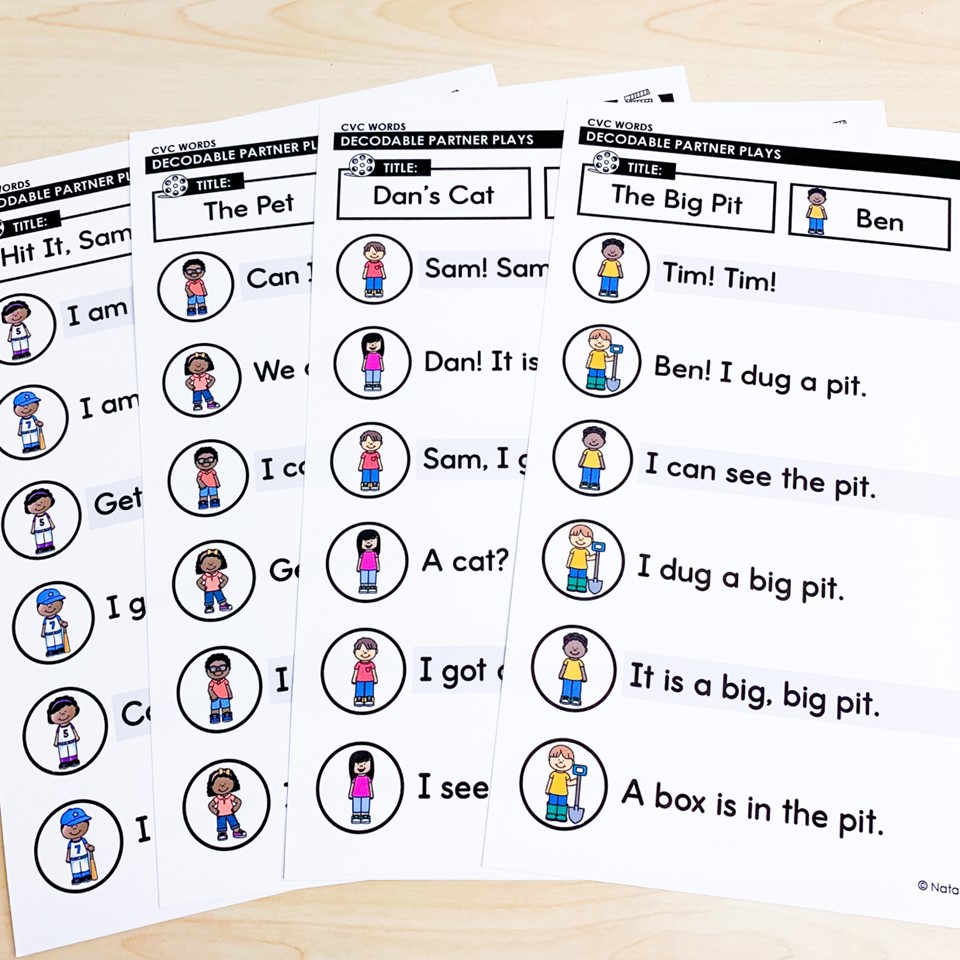
As a character, students can wear a character hat or character nametag to signal who they are playing.
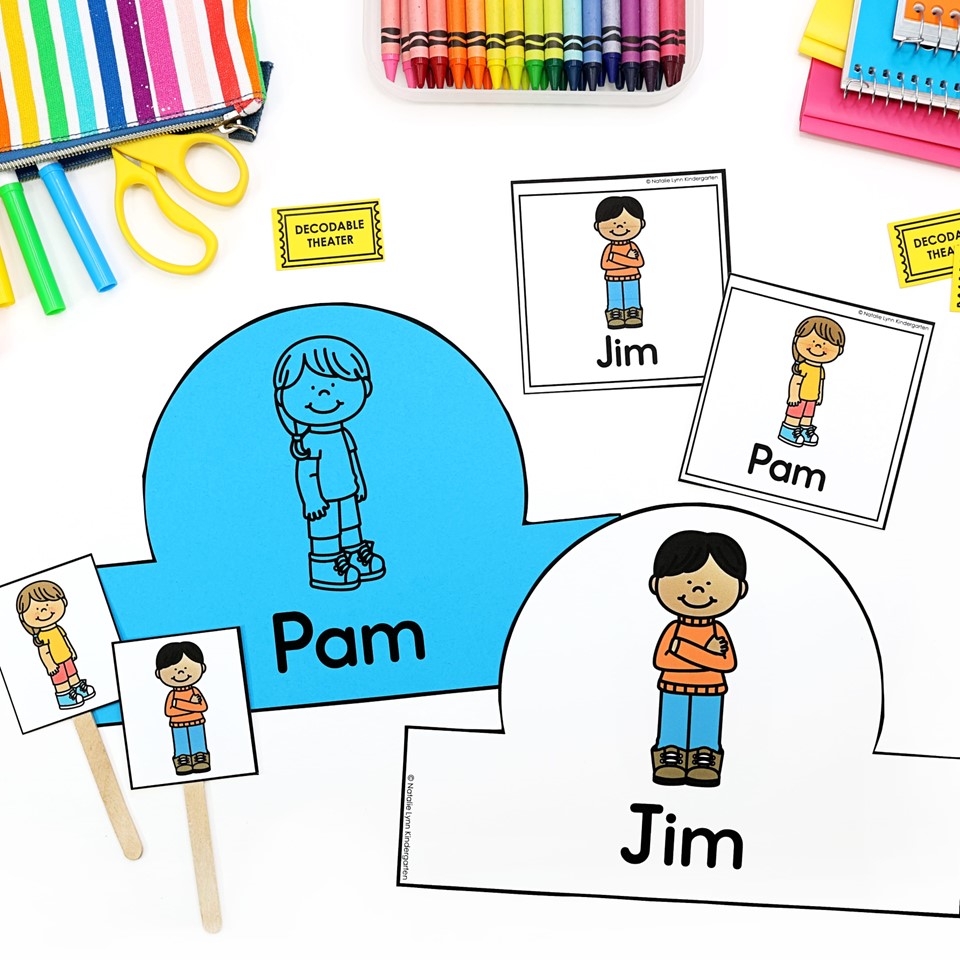
Character stick puppets are also included if students want to put on a puppet show (or act out a story without a partner. The student can read both roles).
For students who are following along, mini decodable books of the play are included. Students can read the dialogue as students are performing. These are also great to send home as a follow up.
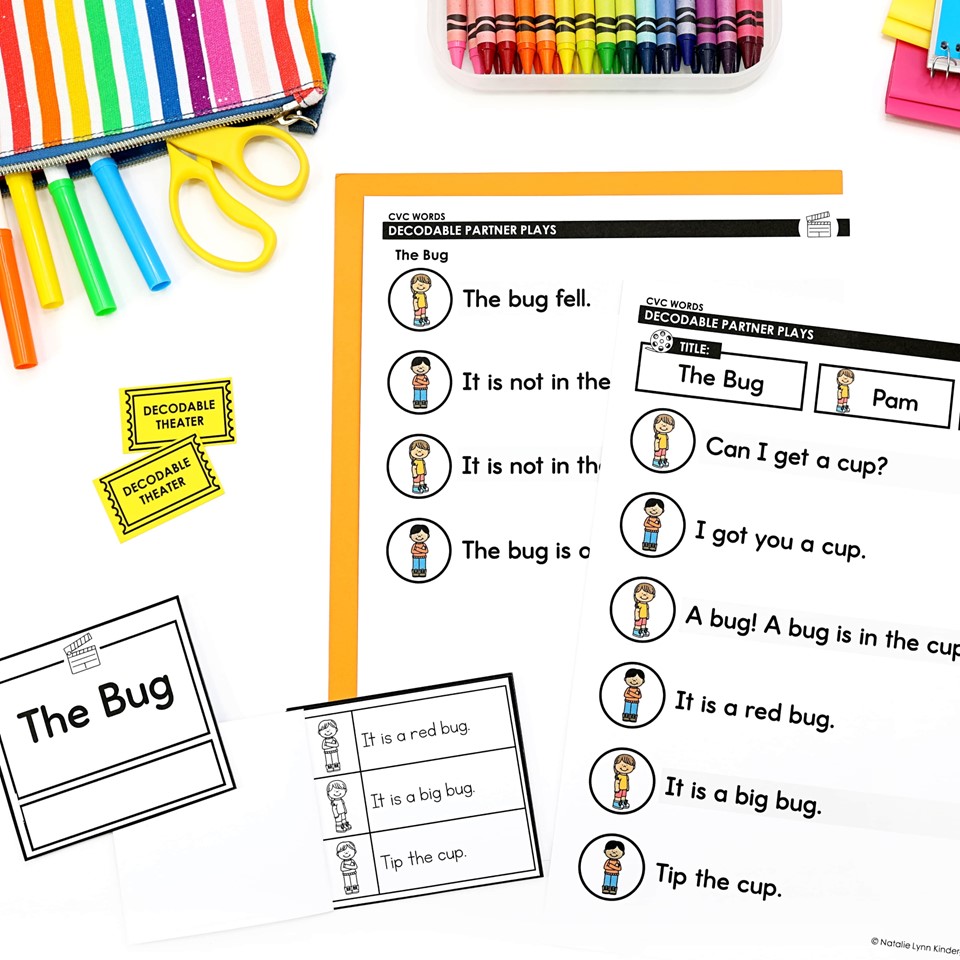
Finally, you can have students retell they story using the included recording sheets if you wish.
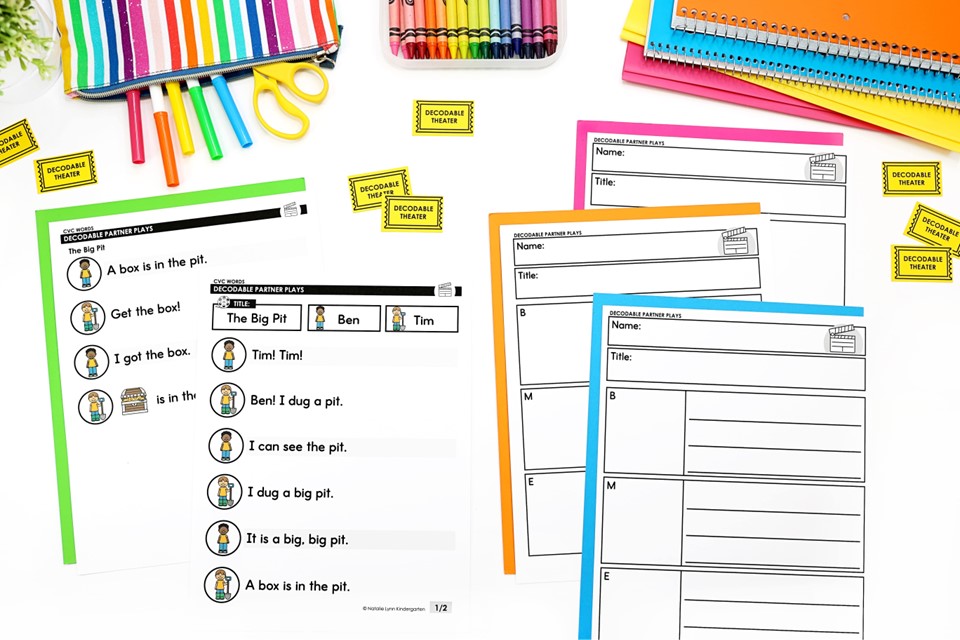
If you want to get REALLY into the experience, materials are included to set up your own “Decodable Theater.”
You can display which show is currently playing. Students can even get tickets for admittance!
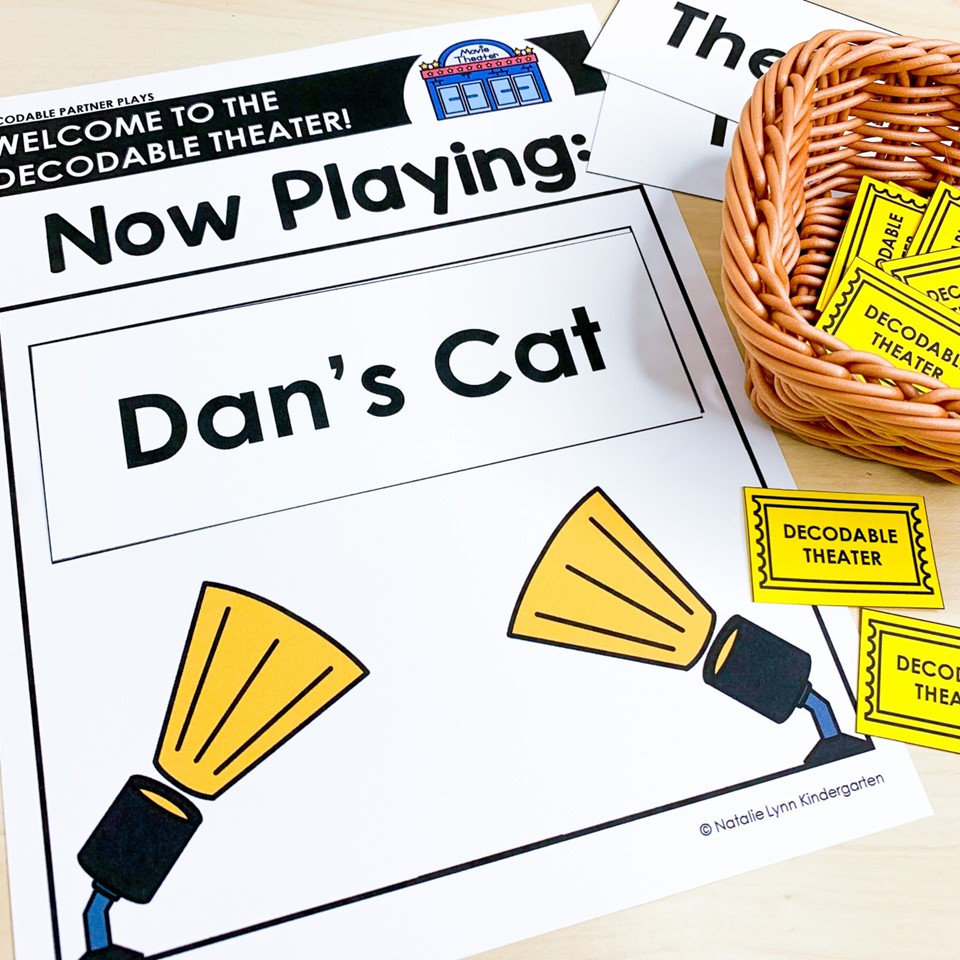
If you put on a performance for families, this can also help make the experience more fun. It can be like they’re actually going to the theater to see their child perform! This is great for a family night.
Where can I find decodable partner plays?
If you’re looking for the best decodable partner plays to use for reader’s theater in your classroom, look no further! My Decodable Partner Plays bundle contains everything you need for engaging and effective reading fluency practice.
This growing bundle is currently super discounted as I am working to add all of the plays. Each pack will include:
- 10-15 decodable partner play scripts
- Character hats, nametags, and puppets
- Mini decodable books
- Recording sheets
- Decodable theater materials
- Easy print options – just click a button!
Since these plays were designed to make differentiation easy, the skills covered will follow the same scope and sequence as my Science of Reading Guided Curriculum.
- CVC words and short vowels
- Digraphs, double consonants, and beginning blends
- CVCe words
- Ending blends, glued sounds, and silent letters
- R-controlled vowels
- Vowel teams
- Diphthongs
Wondering how you can use these decodable partner plays in your classroom? Check out these ideas below:
- Partner literacy centers: Once taught the routine, this can easily become an independent partner literacy center in your classroom.
- Individual option: Puppets are included so students have the option of reading and performing each play on their own.
- Small groups: Use the partner plays as an alternative to decodable readers.
- Dramatic play: An optional Decodable Theater set up is included to help you create a meaningful and educational dramatic play theater.
- Classroom performances: Create a family performance night or just put on play performances for your own class!
Ready to add these decodable partner plays into your classroom routine?
Want to learn more about the Science of Reading and using decodable texts in the classroom? Check out these blog posts:
What is the Science of Reading?
Can Guided Reading Work with the Science of Reading?
What Does a Pre-Readers Lesson Plan Look Like?
Why Your Reading Strategies Don’t Work (And What to Do Instead)

